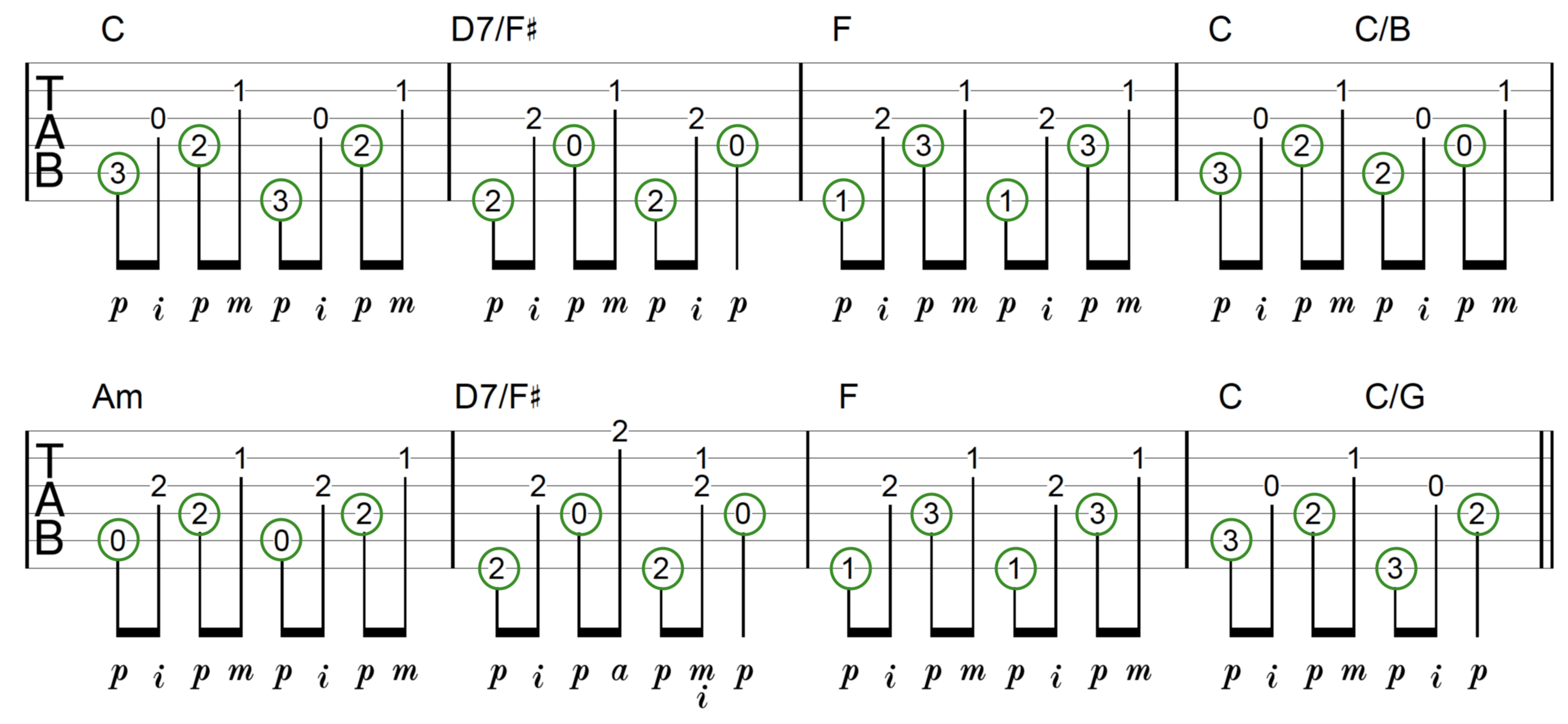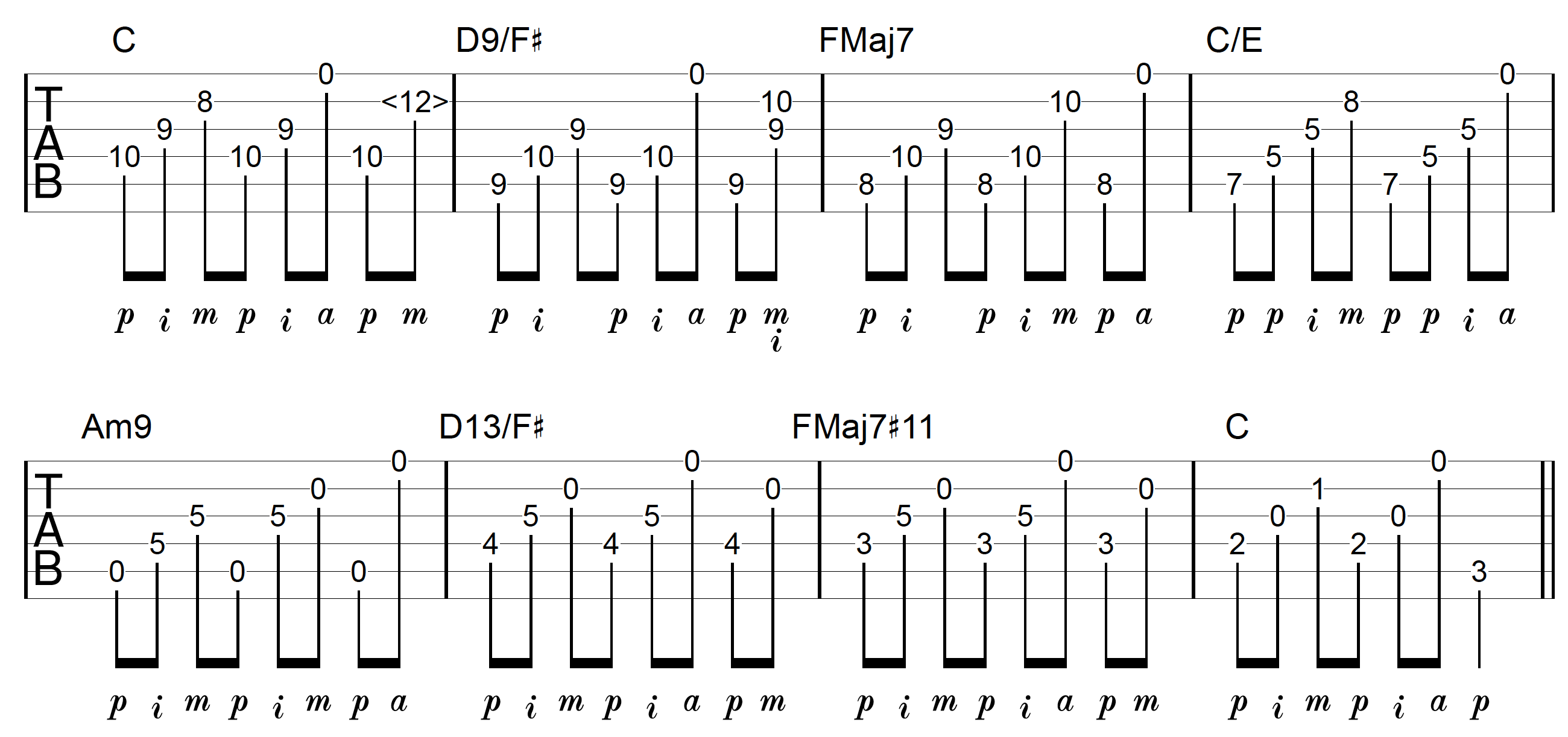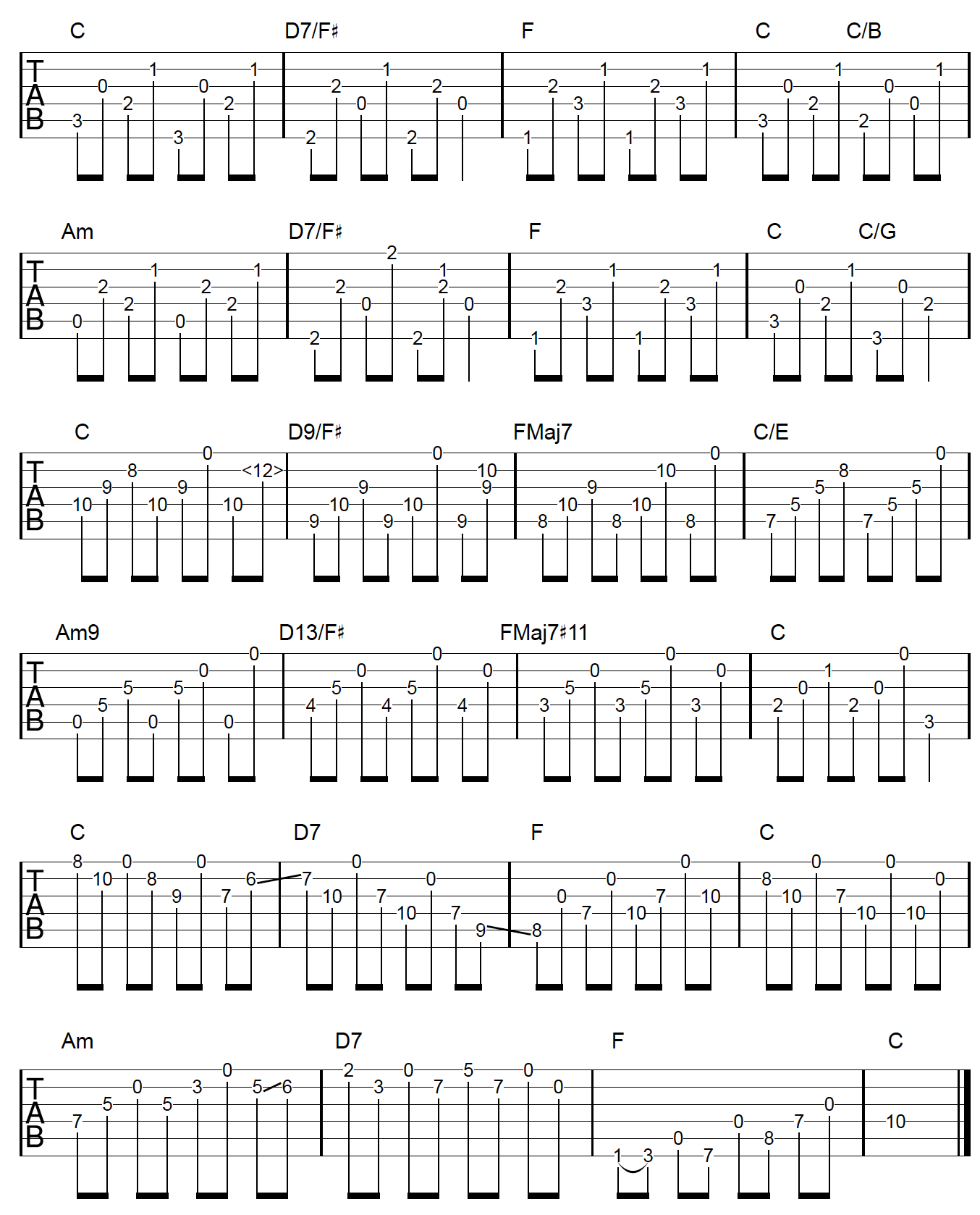Discover The Secrets To Creating Amazing Fingerpicking Guitar Music
by Simon Candy Musician And Guitar InstructorThe ability to be creative with your guitar playing is in direct proportion with how well you can apply the things you learn. Anything you do not or cannot apply is wasted.
With that said, today’s lesson is all about being creative with fingerpicking on guitar. However in order to be creative in this area of guitar playing you need something to be creative with of course.
So first I am going to present to you several fingerpicking patterns.
These patterns alone as you are introduced to them, won’t sound very musical at all. No matter how well you get the patterns down, or how fast you can play them, they will still sound rather dull in isolation.
This is ok as you will not have applied them in any kind of creative way yet, which will be the next step, and the whole point and focus of this lesson.
You see, when it comes to fingerpicking, patterns and technique while most certainly important, are secondary to how you apply them to create music.
Once I have taken you through these fingerpicking patterns you are going to get a glimpse into just some of the many awesome ways they can be applied to create amazing sounding music.
To highlight this, I am only going to be applying our patterns to one single chord progression throughout.
I want to show you there is more than meets the eye to getting a great fingerpicking sound on your guitar than fingerpicking patterns alone.
Fingerpicking Patterns
The following are 3 common approaches to fingerpicking guitar as far as patterns are concerned. As I have already said, on their own these patterns aren’t anything special, nor do they sound very musical.
That’s ok. We will be changing all that in just a short while. But first I need you to familiarise yourself with the following fingerpicking patterns.
Pattern 1: The Clawhammer
The first pattern I am going to show you is perhaps the most common of all. It can be heard in literally thousands of songs and will become an extremely useful pattern for your own fingerpicking.
It can be called different names. I like to call it the clawhammer fingerpicking pattern. Even though it is not the clawhammer technique that is associated with the banjo, it helps distinguish this pattern from travis picking, which is another name some people like to call this pattern, though it is not travis picking strictly speaking.
Whatever you call it, it’s just a great pattern to get under your fingers because of its extensive use in the fingerpicking world.
The clawhammer pattern centres around your thumb plucking bass patterns on the lower three strings of your guitar, while your fingers pluck notes on the top 3 strings in various combinations.
The thumb is always playing notes on the beat. The notes you pluck with your fingers on the higher strings can be on and off the beat.
Here is a version of the clawhammer pattern to get you started:

Pattern 2: The Banjo Roll
Next up is a forward banjo roll pattern:

These types of patterns are taken from the banjo, hence the name, and can be used in all sorts of very cool and unique sounding ways on the guitar as you are about to hear.
Pattern 3: The Open String Fingerpicking Pattern
This third pattern is a little more generic than the first 2 patterns. Don’t be fooled though, when applied a certain way on your guitar it will sound anything but generic!
I call this the open string pattern because when applied, open strings will feature heavily bringing a very unique sound to your fingerpicking guitar solo lines
Here is the pattern ascending:

And here it is descending:

Our Chord Progression
Throughout this lesson I am only going to be using one chord progression to apply each fingerpicking pattern.
Here is that chord progression:

By using just one progression you will see just how different we can make it sound with our patterns. However it’s more than the patterns at play here that contribute to the great sounds we will be getting from this progression.
Fingerpicking Pattern Application 1: The Clawhammer
Here is one way we can apply the clawhammer fingerpicking pattern to our progression:

The bass component is the most important part of this pattern.
Notice how it always falls on the beat and follows a consistent pattern as far as the order of the strings. I have highlighted the bass notes so you can see this clearly.
There is much more that could be said about the clawhammer pattern here, however it is beyond the scope of this lesson to do so.
Fingerpicking Pattern Application 2: The Banjo Roll
Let’s now move on to the banjo roll pattern.
Here is one way it could be applied to our progression:

Aside from the pattern in the example above, you will also notice I am using different chords to play the progression.
Remember when I said there is more at play than just fingerpicking patterns contributing to the sound of our progression.
Well, this is what I was meaning.
Your fretting hand has as much to do with how great your fingerpicking may or may not sound as your picking hand does.
Having a variety of ways to voice the chords out to a progression will allow you to showcase your fingerpicking skills on a much higher, more impressive level.
If all you know are open and bar chords, then you really don’t have much of a platform from which to apply your fingerpicking skills, such as the patterns we are looking at in this lesson.
Too many people focus on the picking hand only when working on fingerpicking. Don’t underestimate what your fretting hand can bring to the party.
Fingerpicking Pattern Application 3: The Open String Pattern
In this the third example of applying a fingerpicking approach to our chord progression, we aren’t even going to play the chords. You will however still hear the harmony of the progression (ie. the chord changes).
Here it is:

In the example above I am creating a solo line through the chord progression. I am targeting tones of each chord as they occur and is why you can hear the progression even though there are no chords actually being played.
The overall sound is a very unique one due to the fact that I am mixing fretted notes with open strings outside of the open position of the guitar. The open string pattern, while not strictly applied, is used throughout.
Sometimes you will feature fingerpicking patterns rather than use them in isolation. You need to be able to adapt them to each musical situation you find yourself in.
Creating A Fingerpicking Etude
To showcase just how unique each fingerpicking approach we have applied to our chord progression sounds, I have combined them here back to back in an etude of sorts:

Each approach above sounded great in isolation, but I think you’ll agree they sound even better when combined!
These are the kind of things that become possible when you not only learn fingerpicking patterns, but how to apply them too.
But there is applying, and there is creative application.
We aren’t simply wanting to dump a fingerpicking pattern onto a chord progression and be done with it. Rather we want a variety of ways we can approach applying our fingerpicking patterns. This is where your fretting hand comes into the equation.
Don’t ignore the fretting hand and what it can bring to the table regarding chords, harmony, melodies and riffs.
Discover how to once and for all master your fingerpicking with this free fingerpicking guitar video lesson series
About Author
Living in Melbourne, Australia, and regularly in high demand, Simon Candy specialises in the acoustic guitar. Through styles including rock, blues, jazz, and fingerpicking, Simon runs both his own guitar school and offers acoustic guitar lessons online
Sponsor Ads
Created on Feb 11th 2021 20:50. Viewed 293 times.



